The cedar-lined path on Mount Haguro has earned three stars in the Michelin Green Guide.
The pond and the massive cedar grove at the summit of Mount Haguro; the summit of Mount Gassan, a passage to the next world packed with the spirits of the dead; Mount Yudono, site of the mountains’ most sacred shrine, where hot water springs from an enormous rock… The story of the rebirth of the Dewa Sanzan holy mountains continues to be told even today.
Photos by Naoya Furuta
Dewa Sanzan: A Holy Site for Haguro Shugendo
Mount Haguro, Mount Gassan, and Mount Yudono, three mountains that spread out in the Murayama/Shonai region of Yamagata Prefecture, are referred to as the Dewa Sanzan. The Dewa Sanzan, as one of the Three Great Holy Sites of the Shugendo religion — along with Mt. Omine, in Nara, and Mt. Hiko, in Kyushu — have attracted religious faith since long ago.
Before the Meiji government enacted laws to separate Shinto and Buddhism in 1868, a Daigongen — a manifestation of Buddha in the form of a Shinto kami — was worshiped for each of the three mountains. Based on “manifestation theory,” which held that kami were manifestations of Buddhas, the Buddhas represented by each mountain’s kami were decided to be: the Bodhisattva Kannon for Mt. Haguro, Amida Nyorai for Mt. Gassan, and Dainichi Nyorai for Mt. Yudono. After the Meiji era, they became Shinto kami, and the summits of the mountains are now home to Dewa Shrine (on Mt. Haguro), Gassan Shrine, and Yudono Shrine.
Of the three mountains, Mt. Haguro is the lowest, with an elevation of 414 meters. Dewa Shrine, at its summit, contains the Sanjingo-saiden sanctuary, where all three of the kami are enshrined, and visitors can worship the kami of Mt. Gassan and Mt. Yudono there in winter when snow makes those mountains inaccessible.
Although Mt. Gassan and Mt. Yudono prohibited women until the Edo period (1603-1867 CE), Mt. Haguro did permit female pilgrims, so prayers for all three mountains were held there.
Mt. Haguro is the closest of the three mountains to the Sea of Japan, so it became a central place for Dewa Sanzan worship as the entrance to the mountains. For this reason, the practice of using the Dewa Sanzan as a place of ascetic practice has come to be called “Haguro Shugen.” In the town that grew up around Mt. Haguro, there are many pilgrims’ inns, which still accept many visitors, along with keeping up the traditions of mountain elders and monk-style vegetarian cuisine.
The first temple on Mt. Haguro is said to have been opened by the strikingly weird-looking Crown Prince Nojo, who was led to the mountain by a three-legged crow. Prince Nojo is thought to have been Prince Hachiko, the son of Emperor Sushun. He is said to have founded temples on all three of the Dewa Sanzan mountains during the Kinmei period (around the middle of the sixth century), prior even to En no Gyoja, the originator of the Shugendo sect.
Prince Nojo did ascetic Buddhist practice under Prince Shotoku, his half-brother, only chanting the Heart Sutra repeatedly. This scripture contains a specific phrase, nojo issaiku, which means, “all pain is gone;” after he encountered that power that heals sickness and takes away all forms of human pain, he decided that he would go by the name of Nojo.
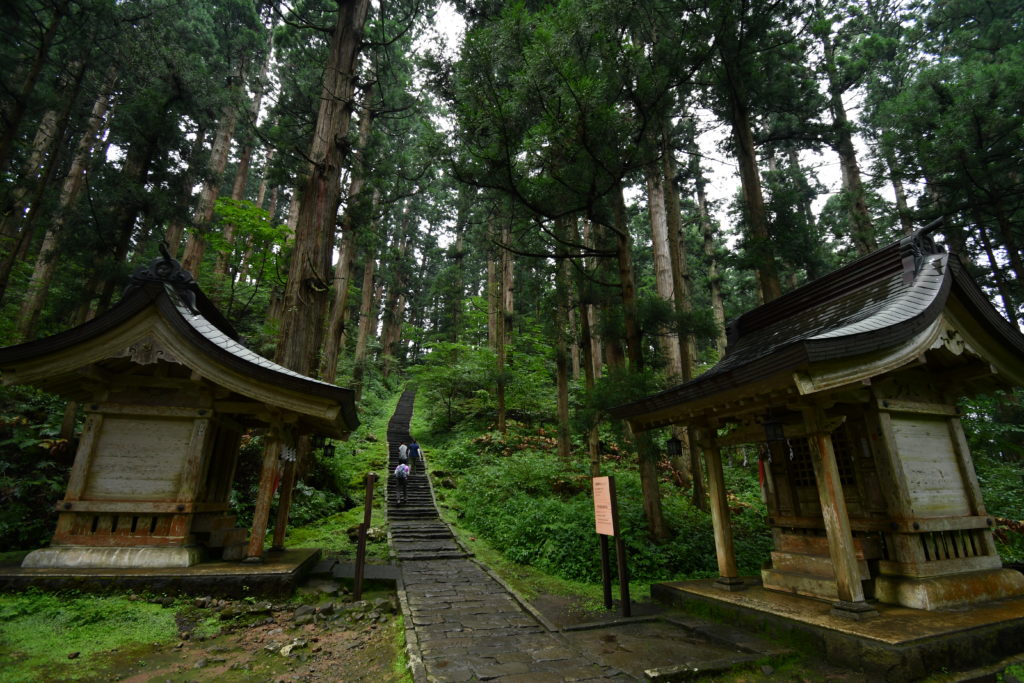
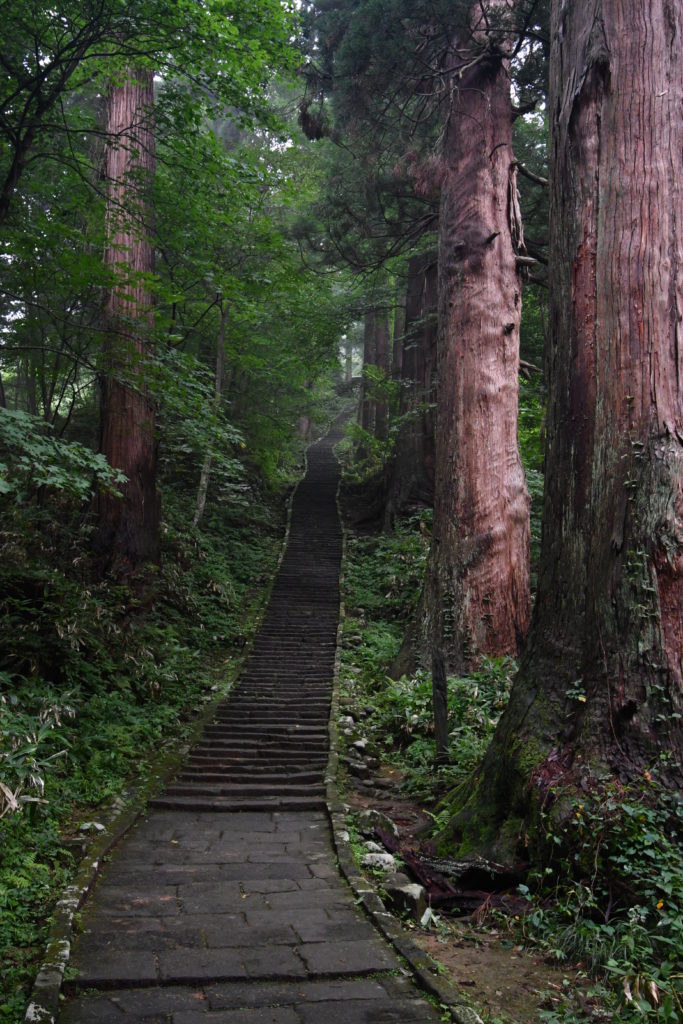
A Cedar-Lined Path with Three Michelin Stars
When you pass through the zuishinmon (a kind of gate used in Shinto practice to keep out evil spirits), which serves as the entrance to Mt. Haguro, what jumps out in front of your eyes will be a path lined with cedar trees, a symbol of the mountain as a whole. From here, the trees run alongside a 1.7-kilometer, 2,646-step stone staircase, all the way to the mountain’s summit.
On either side of the path stand some 580 massive cedars, ranging in age from 300 to more than 500 years old. These majestic trees, designated as a National Natural Monument, were planted during the Keicho and Kan’ei eras (1596-1644 CE) and have received three stars in the Michelin Green Guide.
Once you have passed through the gate and down a set of stone steps, you will be able to see the Shinkyo Bridge, which spans the Haraigawa River. Cross the bridge and walk just a little further, and on your left will be the Jijisugi, or Grandfather Cedar, said to be the oldest tree on Mt. Haguro. It is said to be at least 1,000 years old, and it, too, is designated a National Natural Monument. Proceed even further down the path, and in the midst of the trees, a five-story pagoda will appear.
This is the Five-Story Pagoda of Mt. Haguro, and it is a national treasure. The structure, which stands 30 meters tall, is said to have been built by famous 10th-century samurai Taira no Masakado. The pagoda as it currently stands was rebuilt during the Northern and Southern Courts period (1336-1392 CE), and its beautiful appearance, a symmetric shape of unadorned wood with shingled roofs, standing in the midst of luxuriant cedars, is quite striking.
Passing the Five-Story Pagoda, you will head up one, two, three steep inclines as you continue on toward the top. And, about an hour after passing through the zuishinmon, you will arrive at the shrine gate that signals the entrance to the summit of Mt. Haguro.
Nearby is a rock upon which Prince Nojo is supposed to have sat. There were once more than thirty temples in these mountains, but since the government’s efforts to split Shinto and Buddhism in the Meiji era, Mt. Haguro Saikan, located near the shrine gate, is the only one left. It is currently used as lodgings for travelers and as a restaurant serving vegetarian food of the kind that monks eat.
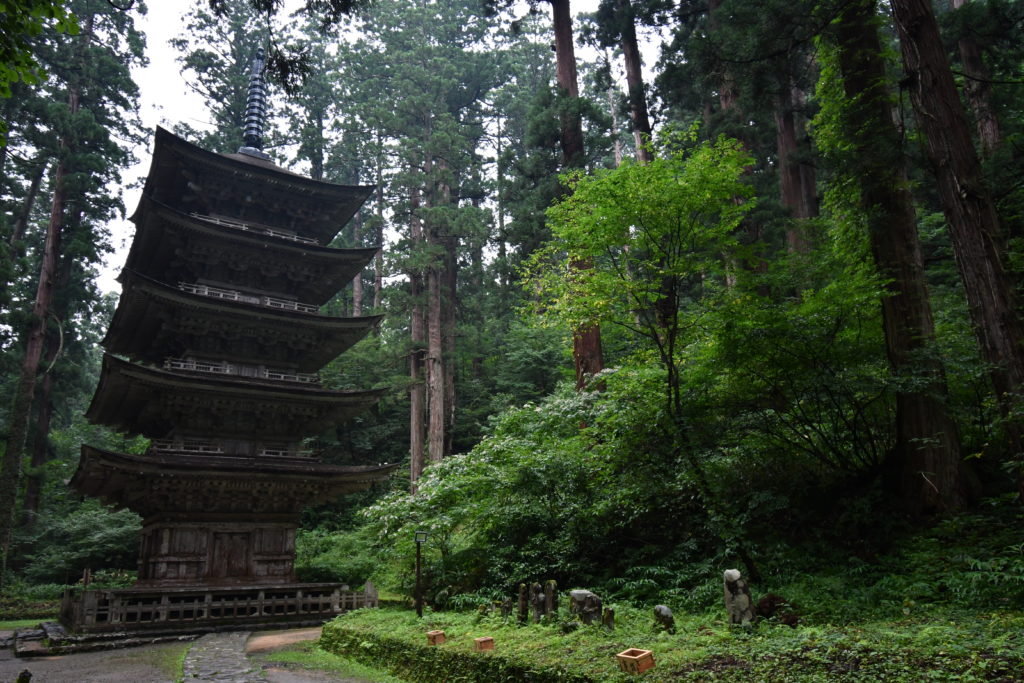
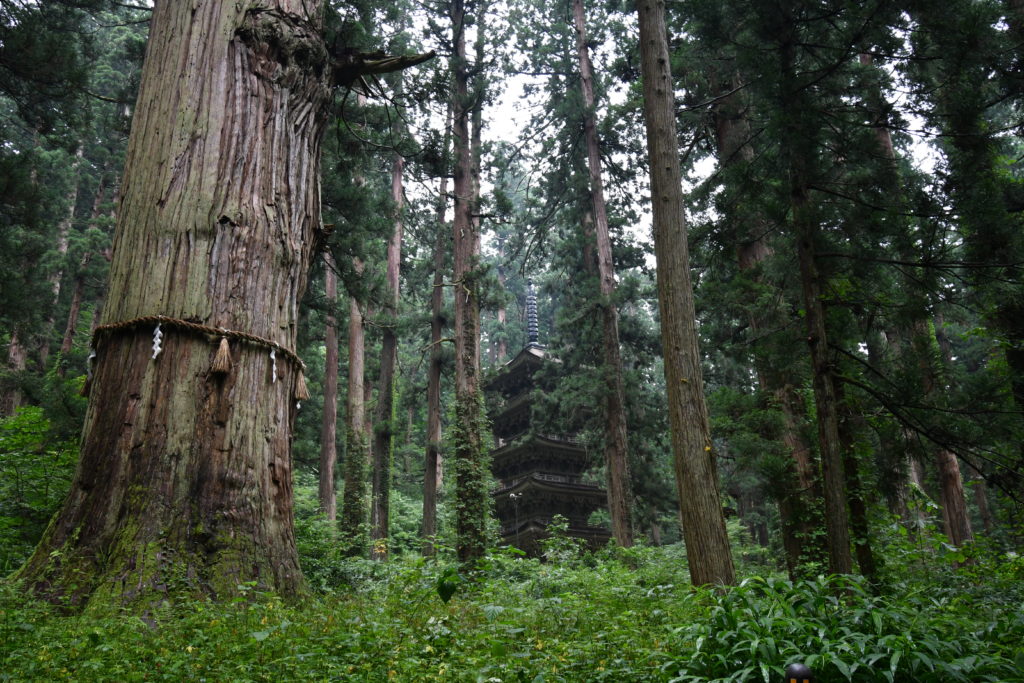
The Mountain Pond — Mitarai Pond and Mine-iri
In front of Sanjingo-saiden, Mitarai Pond, whose name means “hand-washing,” has been one of Mt. Haguro’s major attractors of worship since long ago. If you lay eyes upon its majestic, sublime form, which appears suddenly at the tree-shrouded mountaintop, you will surely understand why it is that this pond has been the subject of worship for so many years. This pond is also known as the Mirror Pond — countless old mirrors dating back to between the late Heian period (794-1185 CE) and the Kamakura period (1192-1333 CE).
Sanjingo-saiden, which stands in front of Mitarai Pond and has also been designated as an Important National Cultural Property, is an enormous building, reaching 30 meters high and has a two-meter-thick thatched roof. It projects an overwhelming sense of presence.
Following the path of Prince Nojo and doing ascetic practice in the mountains is known as mine-iri, “entering the peak,” and it forms the foundation of Shugendo on Mt. Haguro. Mine-iri was once performed in all four seasons, but it is no longer practiced in the spring.
Autumn mine-iri involves ascetic practice focused on seclusion in the mountains for roughly a week, with the goal of training to become a mountain monk. In autumn mine-iri, by passing through ten states of being (hell, hungry ghost, beast, demi-god, human, heaven, disciple, self-taught Buddha, bodhisattva, and perfected Buddha), Shugendo practitioners achieve pseudo-death and revival — that is, they achieve rebirth, intending to become mountain monks who can achieve Buddhahood during life.
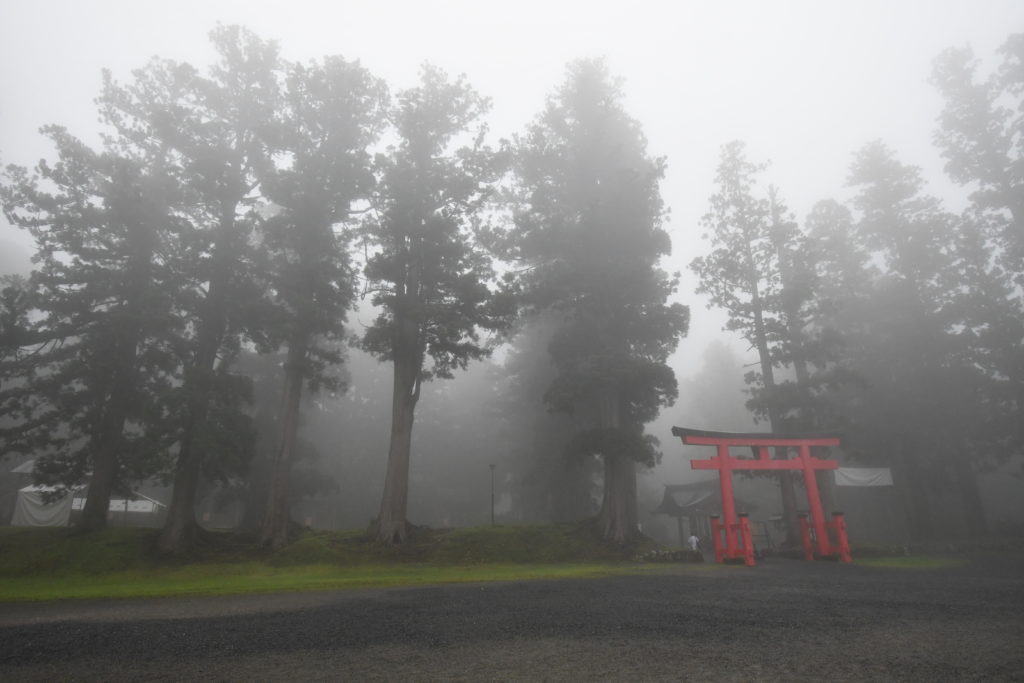
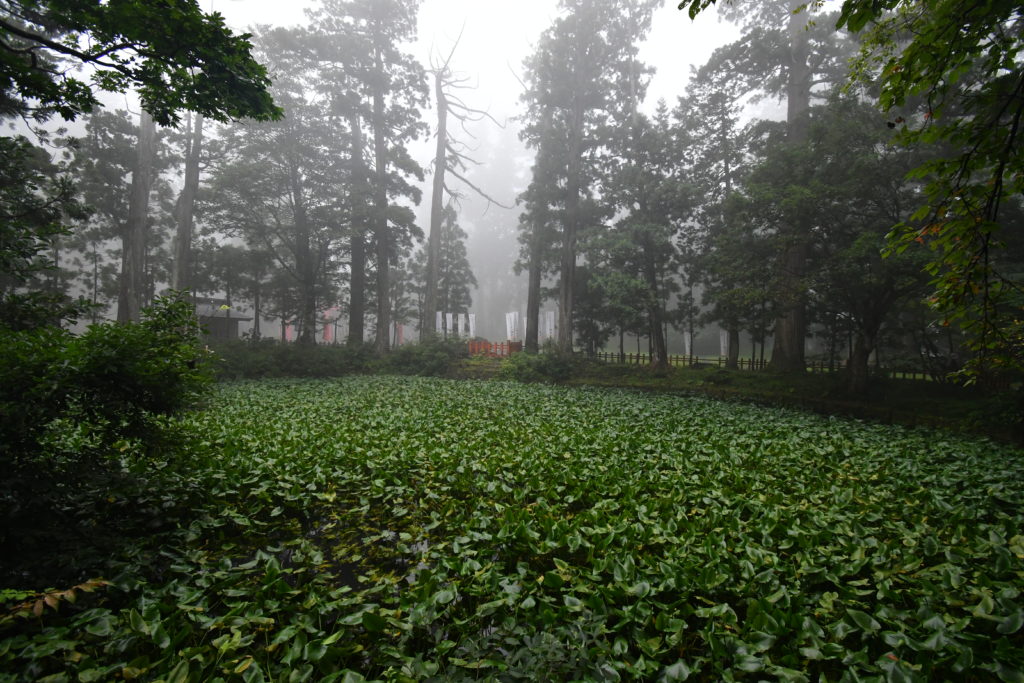
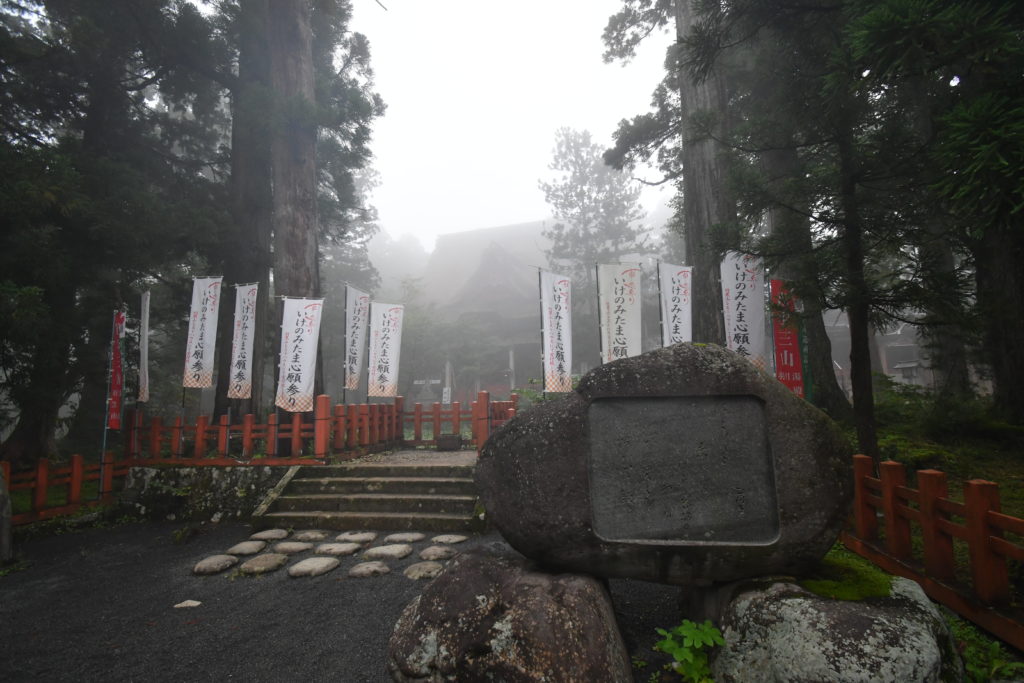
The Mountain Where the Spirits of the Dead Gather: Mt. Gassan as the Pure Land
Mt. Gassan is the highest of the three Dewa Sanzan mountains, at 1,984 meters. Its summit has long been said to be a place where the spirits of the dead gather. The Buddha of Mt. Gassan was Amida Nyorai, and Mt. Gassan was treated as his “pure land” paradise. Signs of this remain in the names of various places on the mountain, such as Midagahara (“Amida Field”) 8/10 of the way up, Busu-ike (“Buddha Life Pond”) 9/10 of the way up, and the Sanzu Riverbed (named for the river separating the world of the living from that of the dead) near the top. In Midagahara, almost 1400 meters up, there is a chain of wetlands. The area is known as a treasure house of high-altitude plants in summer, including Nikko daylilies, Asian skunk cabbage, and Aleutian avens. In order to protect this natural wealth, this spot has been designated as a Special Protection Zone of Bandai Asahi National Park.
With the flowers that proudly bloom in these mountain wetlands; the steep rock called “Pilgrim’s Return;” the mountain peak that projects into the air; the scree slope that is thought of as the Sanzu Riverbed; and the Brocken spectre phenomenon, which makes visitors’ shadows appear enormous and is often witnessed on Mt. Gassan, it is easy to understand why this place is often regarded as “The Mountain Hereafter.”
Mixing with ordinary climbers on Mt. Gassan, seeing the many different people who visit — groups of white-clothed pilgrims led by mountain elders, Shugendo practitioners blowing conch-shell trumpets — you can feel in your bones the breath of traditional Haguro Shugen practice even in modern times.
These days, Tsukuyomi-no-Mikoto, who in Shinto rules the world of the dead, is worshiped at Gassan Shrine, on the peak of Mt. Gassan. Here, worshipers’ souls are purified, and they begin to move forward toward rebirth once more.
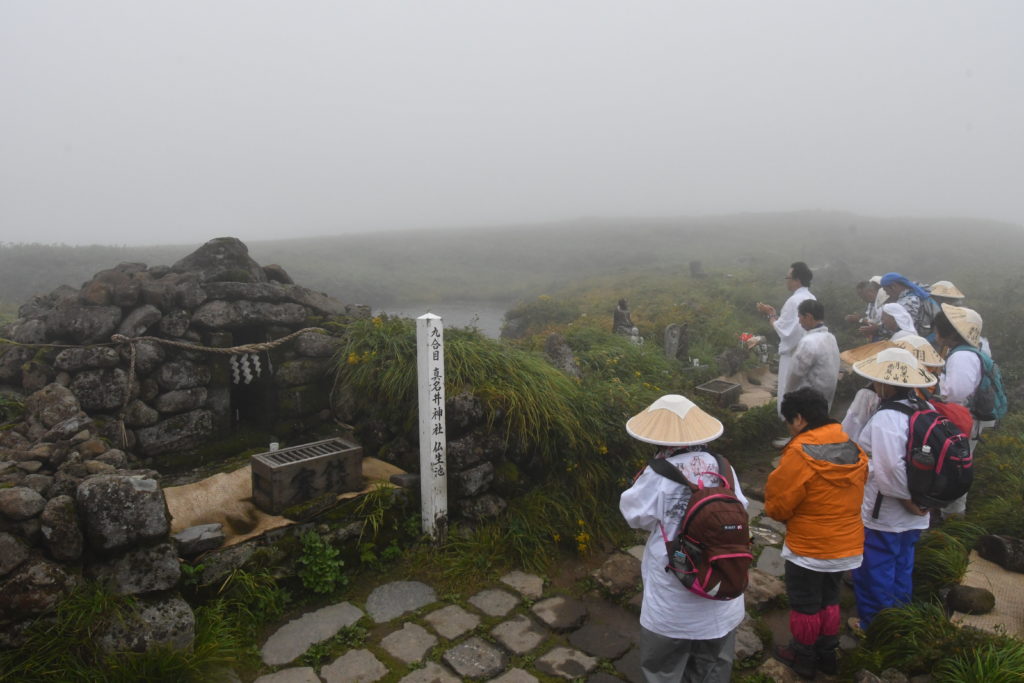
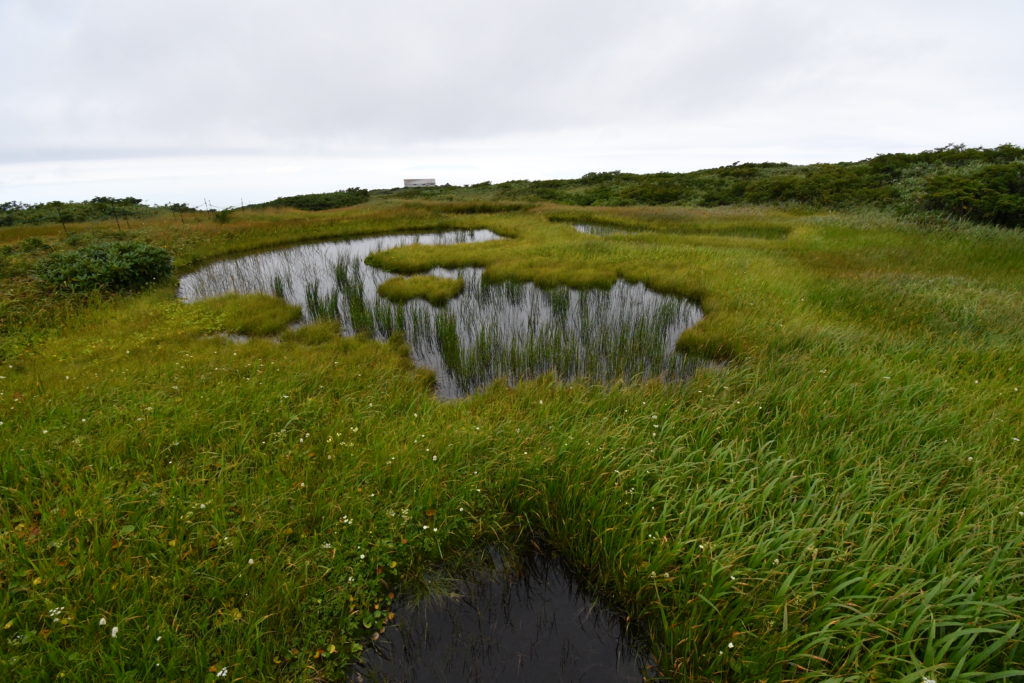
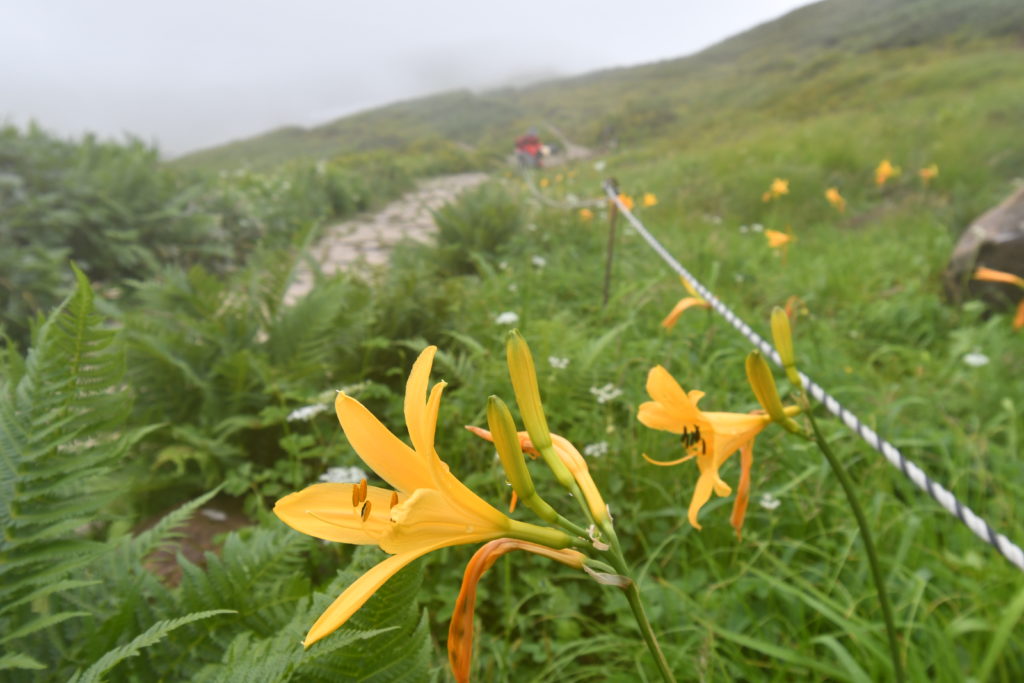
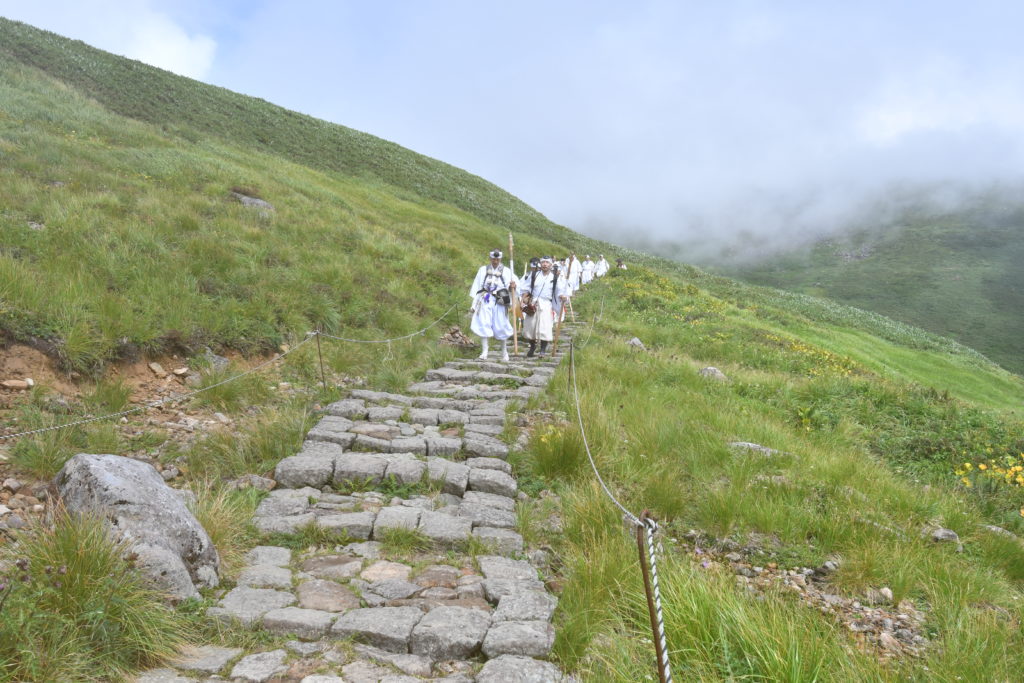
Mt. Yudono: The Inner Sanctum of the Dewa Sanzan
The third mountain of the Dewa Sanzan, Mt. Yudono (1500 meters high), has long been treated as the inner sanctum of the three mountains, and it is a sacred place, where visitors are warned that they must neither speak nor listen. The worship subject here is an enormous stone on the path by a mountain stream, whose reddish-brown color gives it an eerie look as it disgorges steaming-hot water. How great the surprise of the first pilgrims here must have been when they came from Mt. Haguro, across Mt. Gassan, to encounter this deity in physical form! They would surely not have been able to prevent feelings of awe welling up in them at the mysteriousness of nature.
The worshipers, barefoot on the grounds of the shrine, climb onto the huge stone that contains the kami’s spirit, using the backs of their hands and feet to feel the heat of the water — and with it, the mysterious power that nature produces.
Mt. Yudono is also known for underground sokushinbutsu. Sokushinbutsu refers to a person who performs intense ascetic practice to help bring the masses closer to salvation, resulting in them becoming a mummy and an object of worship after death. Many of these practices are performed at the mountain’s various pilgrimage spots, such as doing cold-water ablutions at the large and small waterfalls that dot the area for as long as a candle burns every day for 1,000 days, and mokujikigyou (“tree-eating”), a form of diet restriction in which a person cuts out five or ten of the most common cereal grains and limits their diet to things like wild berries and pine needles.
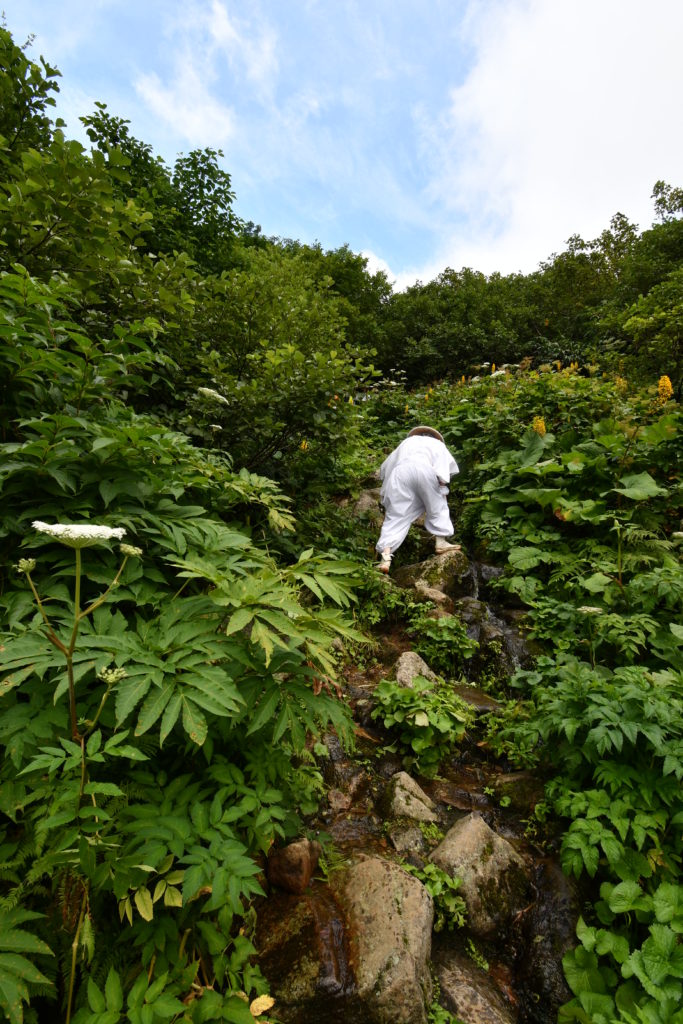
Dewa Sanzan: Part of the Japanese Heritage
In 2016, the Dewa Sanzan mountains were certified as a Japan Heritage Site. Japan Heritage is a system by which the government’s Agency for Cultural Affairs certifies the stories of our nation’s culture and traditions, as told through the charms and quirks of regional history. Unlike the Cultural and World Heritage lists, this system does not aim to guarantee the protection of items but to maintain and make use of various highly-appealing tangible and intangible cultural assets, strategically transmitting information about them to people both inside and outside of Japan in hopes of bringing about regional revitalization.
Japan Heritage’s story about the Dewa Sanzan is entitled “A Journey To Rebirth” Amid The Sacred Nature Of Dewa Sanzan. Its focus is on explaining to modern people how the idea of traveling around these mountains as a “journey to rebirth” spread among ordinary people during the Edo period, and how the natural scenery of mountains became linked to religion in ancient Japan.
The pond and lines of cedars at the summit of Mt. Haguro, which serves as the base of Haguro Shugendo practice; the Mountaintop Hereafter on Mt. Gassan, where the spirits of the dead gather; Mt. Yudono, the inner sanctum of the Dewa Sanzan, with its massive stone from which hot water gushes. It can surely be said that, while each of these mountains gives off a strong, distinct personality,
the Dewa Sanzan as a whole continues even now to pass down its story of rebirth and its attendant religious practices.
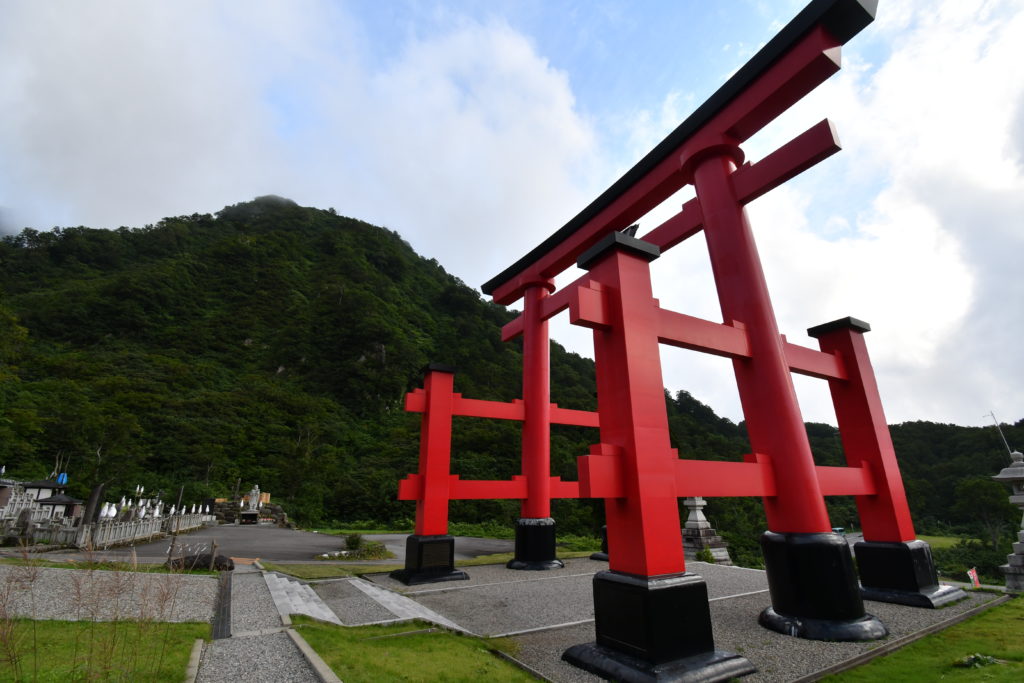
Translated from the original article: Naoya Furuta (2018) Dewa Sanzan: Three Mountains of Rebirth Amid Sacred Nature, Chiikijin vol.26, pp. 62-67

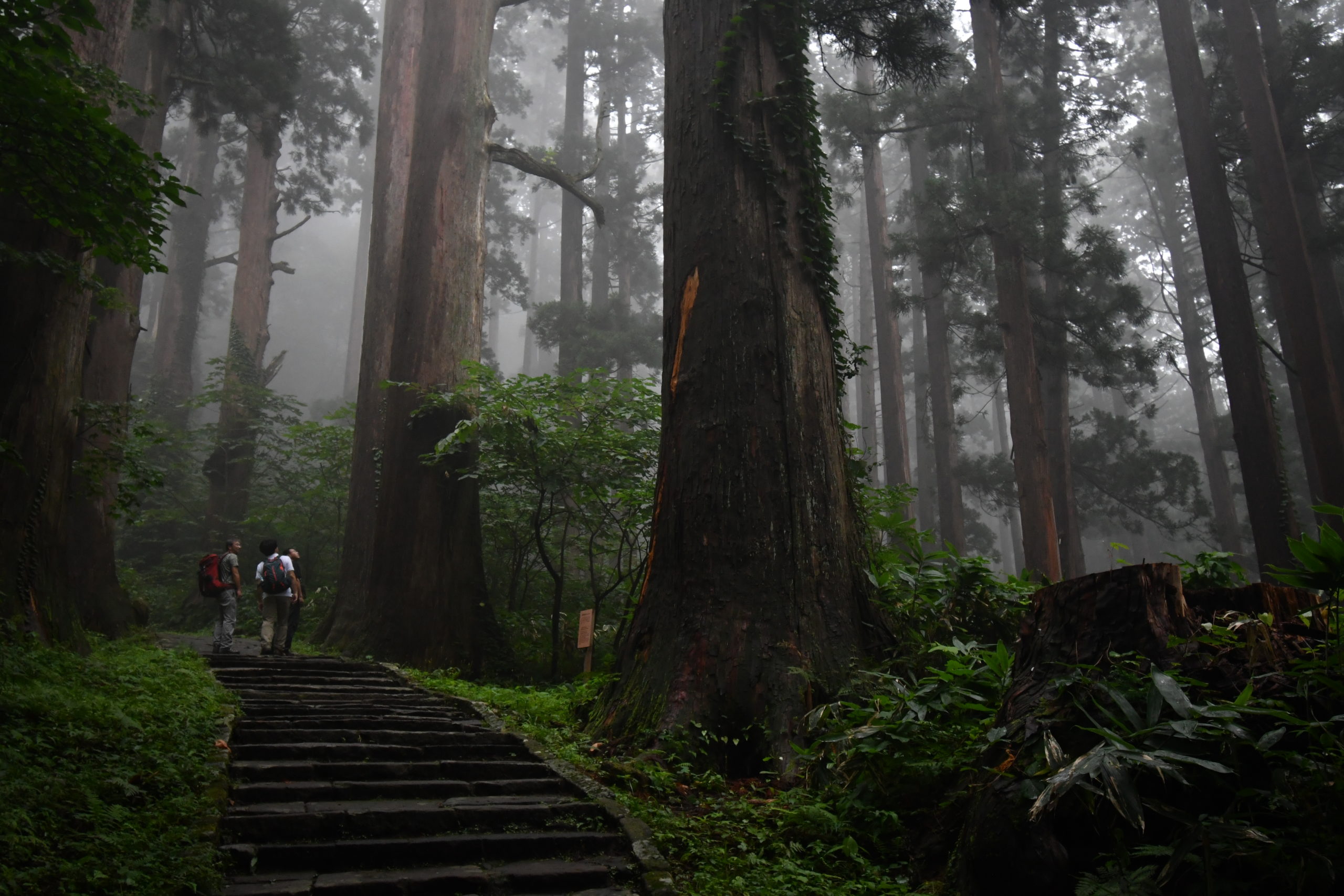

コメント